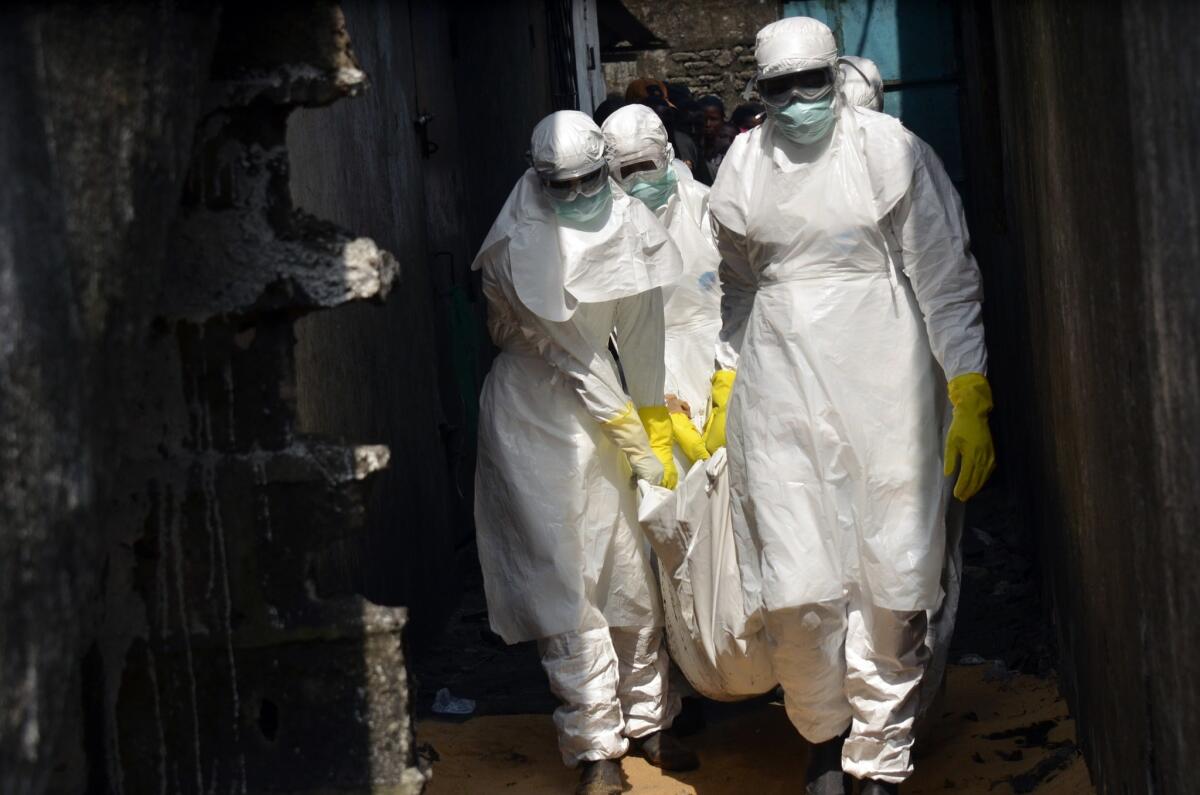Liberia’s Ebola epidemic could be eliminated by June, researchers say

- Share via
A new analysis of Ebola cases in West Africa predicts that the epidemic in Liberia could be eliminated by June if medical workers can hospitalize 85% of those infected.
“That’s a realistic possibility but not a foregone conclusion,” wrote lead author John Drake, a computational ecologist and epidemiologist at the University of Georgia’s Odom School of Ecology.
“What’s needed is to maintain the current level of vigilance and keep pressing forward as hard as we can,” he wrote.
The analysis was published in the journal PLOS Biology on Tuesday -- the same day that the director of the U.S. Centers for Disease Control and Prevention offered an assessment of the situation, according to Reuters.
“I remain very confident we can get to zero cases in this epidemic if we continue the way we’re going and nothing unexpected happens,” CDC director Dr. Tom Frieden told officials in Washington, D.C.
Due to the unprecedented spread of the virus, some experts have feared that Ebola might become endemic to West Africa, a region in which humans had never before been infected.
On Tuesday, Frieden alluded to this possibility, and said it was crucial that all existing cases of the illness be identified and treated.
“The largest, biggest risk is that it continues to fester and continues to spread at a low rate, which means it could flare up at any time,” Reuters quoted the director as saying. “We have to get to zero and then stay at zero and that’s going to require monitoring, surveillance.”
According to World Health Organization estimates, Ebola has sickened more than 21,171 people and killed more than 8,371 in Liberia, Sierra Leone and Guinea -- the nations hit hardest by the epidemic.
In the paper published Tuesday, Drake and his colleagues attempted to account for human behavior in their forecast.
While previous estimates have focused largely on the reproductive rate of the virus, Drake and his colleagues attempted to account for ongoing public health interventions, as well as burial practices and patient attempts to avoid detection, among other variables.
Using a so-called branching process model, the researchers estimated a variety of possible outcomes.
In each case, hospital admissions were assumed to result in reduced transmission of the virus, which is spread through exposure to bodily fluids. Hospital treatment in turn is limited by the number of available hospital beds, authors wrote.
In the worst case scenario, virus transmission would remain at “near critical” levels if hospital bed capacity remained unchanged and only 70% of infected individuals received hospital treatment.
Researchers said that in this worst-case scenario, “active transmission would most certainly continue into the second half of 2015.”
However, if health officials achieved an 85% patient hospitalization rate and managed to maintain it, “simulations suggest the epidemic will be largely contained sometime between March and June 2015.”
Study authors said both scenarios predicted a rapid decline in the first months of 2015, followed by a longer “tail.”
Researchers said they focused on Liberia because it initially experienced the fastest epidemic growth.
“Continuing on the path to elimination will require sustained watchfulness and individual willingness to be treated,” authors wrote.
Follow @montemorin for science news







